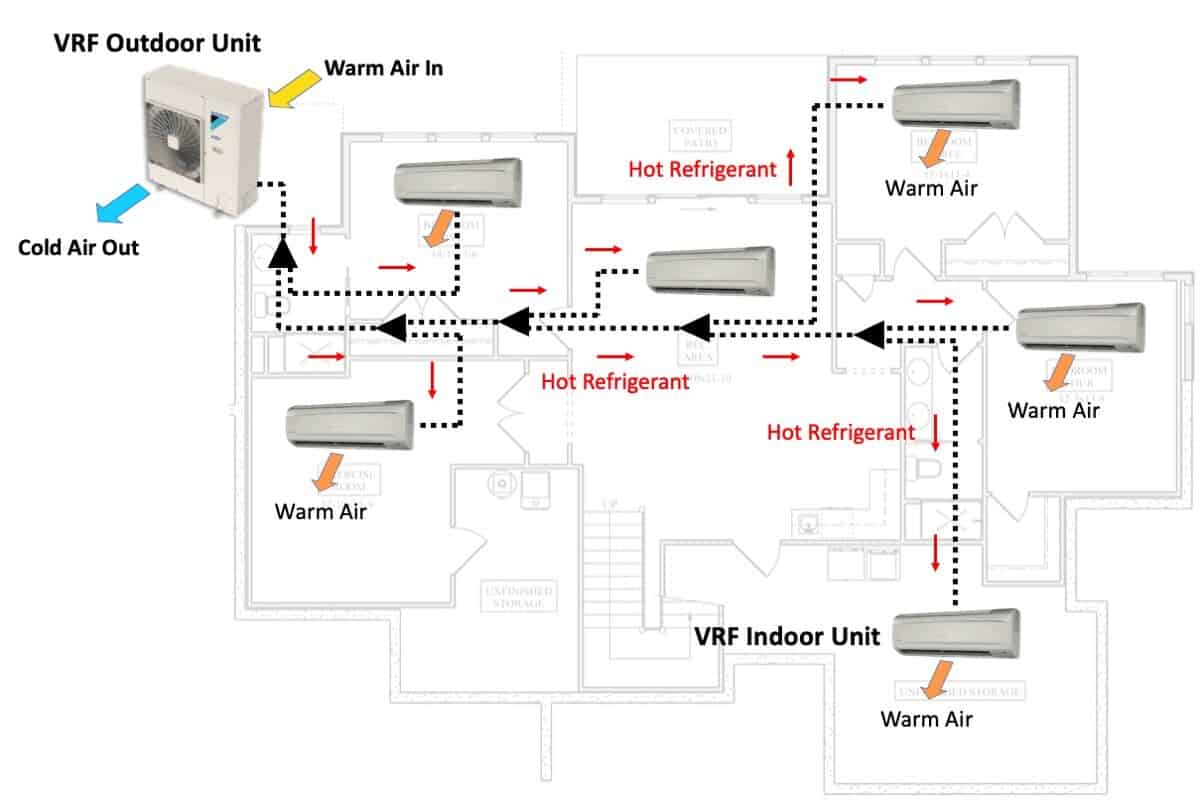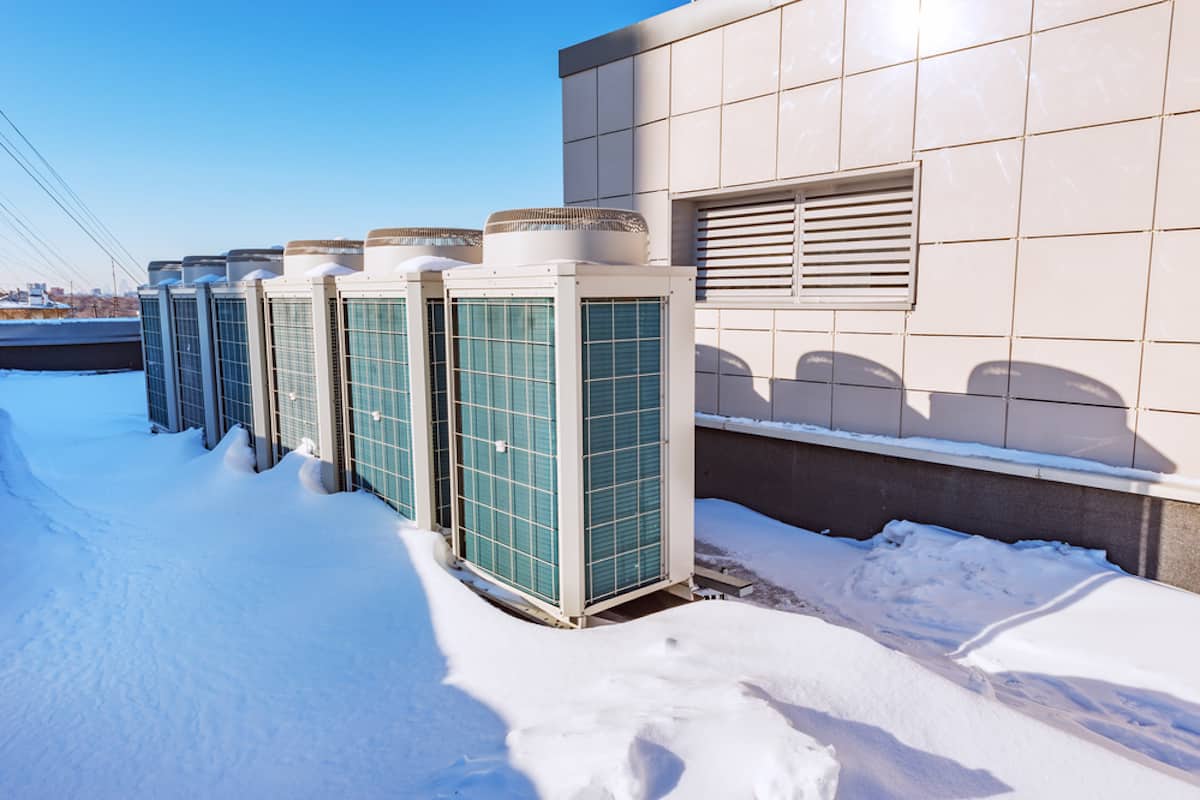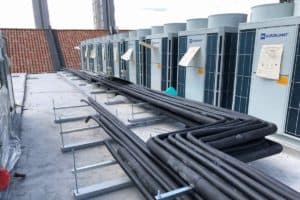Can VRF Provide Heating? (How It Works)
VRF is relatively new to many people. It is an energy-efficient air conditioning system that can cool a whole house. But, people are concerned if VRF can provide heating. So, I did some research.
It turns out that VRF can indeed provide heating. VRF can reverse its refrigeration process to harvest heat from the ambient air and turn that heat into useful work and heat the house.
VRF is quite complex compared to other air conditioning systems. However, understanding how VRF works can ensure you don’t miss out on an energy-efficient heating system.
What is VRF Heating?
When it comes to home heating, there are several systems you can choose from including the most basic firewood stove, the popular gas furnace, the new mini split heat pump system and now, the VRF heating system.
VRF stands for variable refrigerant flow. As the question suggests, VRF heating means using VRF technology to provide space heating for the house.
VRF systems are very similar to mini split heat pump systems. To learn their differences, see my post Mini Split vs VRF: What’s the Difference? where I compare VRF to single-zone and multi-zone mini splits.
With a VRF system, you always have one outdoor unit regardless of how many indoor units you have, often up to 64 indoor units.
Basically, the VRF outdoor unit sends a variable amount of hot refrigerant to each indoor unit depending on how much heating is required in each room.
Hence, the name variable refrigerant flow (VRF).
VRF indoor units are much like mini split indoor units. They can be wall-mounted units, floor-mounted units, ceiling cassette units, ceiling ducted units and even floor-standing air handling units. These indoor units receive hot refrigerant from the VRF outdoor unit and circulate air through their heating coil to provide warm air to their respective room.
Once the refrigerant releases heat into the room, it returns back to the VRF outdoor unit where it absorbs heat from the ambient air and repeats the heating process.
How Does a VRF System Heat?
A VRF system is essentially a larger form of mini split system. However, the VRF refrigerant piping system is drastically different from the mini split.
VRF systems use a y-joint or refnet joint to connect their refrigerant pipes. In the end, there is only one pair of refrigerant pipes connected to the VRF outdoor unit.
Below is a diagram that illustrates how the VRF outdoor unit produces hot refrigerant for the heating process:

Inside the VRF outdoor unit is where a typical refrigeration process happens. In heating mode, the VRF compressor compresses the refrigerant thereby producing hot refrigerant. The hot refrigerant is directly sent to the respective indoor unit where necessary.
Once the heat is released at the indoor unit, the cold refrigerant returns back to the VRF outdoor unit and the system harvest heat again from the ambient air to repeat the heating process.
Now, let’s take a look at the VRF refrigerant piping system and see how heat is transferred from the ambient air to the house:

The above diagram is a typical VRF setup. Each room has an indoor unit and all indoor units are connected back to the VRF outdoor unit in series.
The triangle shape drawn in the above diagram is the y-joint mentioned earlier. It is a special copper fitting that is provided by the respective VRF manufacturer to ensure proper refrigerant distribution across the system.
Hot refrigerant produced by the VRF outdoor unit travels to each indoor unit via the refrigerant gas line and returns as cold refrigerant via the refrigerant liquid line.
Through the variable refrigerant flow (VRF) technology, the heating capacity of each indoor unit can be precisely controlled. As a result, comfort and energy efficiency are greatly improved.
To learn how VRF works in detail, see my post VRF Working Principle (Air-cooled & Water-cooled) where I explain the working principle of air-cooled and water-cooled VRF systems.
Can a VRF System Heat Well in Cold Weather?
VRF is a powerful heating system. VRF systems can work very well in cold weather. Even at below freezing point, VRF systems can still provide adequate heating for the house.
However, just like any other heat pump, the heating capacity and efficiency of VRF systems drop alongside the ambient temperature.
Low Ambient Heating Performance
A standard 4-ton VRF outdoor unit has a heating capacity of 52000 BTU at 47°F (8°C) ambient temperature. At 17°F (-8°C) ambient temperature, its heating capacity drops to 32200 BTU. Meanwhile, the heating efficiency drops from COP 4.0 to COP 3.0.
Hence, from an ambient temperature of 47°F (8°C) to 17°F (-8°C), the heating capacity drop is about 40% and the heating efficiency drop is about 30%.
The lowest ambient temperature which a typical VRF system can work is usually around -13°F (-25°C). However, some larger VRF systems can still work at around -22°F (-30°C) ambient temperature.
So, in order for a VRF system to perform well in cold weather, its low ambient heating capability and limitations must be considered when sizing and selecting the VRF outdoor unit.
Anti-Freezing Feature
HVAC systems that use the refrigeration cycle to provide heating often need to defrost once in a while when the ambient temperature drops below freezing point.
Some of them have a drain pan heater to ensure that their condensate water doesn’t freeze and clog the system. VRF systems usually have the same feature.
In addition, larger VRF systems can divert a small amount of hot refrigerant to heat their drain pan in order to prevent freezing so that they can be more energy efficient in low ambient temperature environments.
VRF vs Heat Pump
Many people often wonder if VRF is the same as heat pumps since they both work quite similarly. However, VRF is not exactly the same as the heat pump that we know of.
Traditionally, heat pumps are able to provide both heating and cooling. However, they are not able to control the amount of refrigerant going into each indoor unit.
On the other hand, VRF can also provide both heating and cooling. In fact, many manufacturers called it a VRF heat pump when it is able to provide both heating and cooling while it is called a VRF air conditioner when it is only able to provide cooling.
So, VRF is a kind of heat pump but it is not the heat pump that we used to know. In other words, VRF by itself is a different kind of HVAC system.
Conclusion
VRF is an HVAC system that can provide heating. It harvests heat from the ambient air and transfers it to the house for heating. In cold weather, the low ambient heating performance of the VRF system must be considered so that you always have adequate heating.
If you have anything to add (or ask) about this topic, leave a comment down below!





